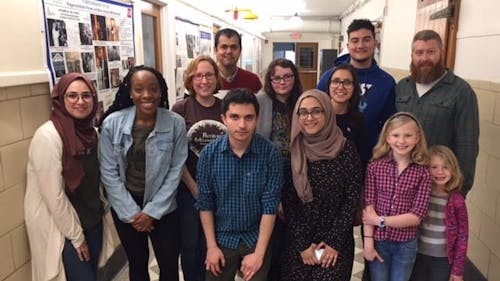Rutgers professors nominate tuberculosis-curing bacteria for official state microbe

Rutgers professors are aiming to pass a bill for New Jersey to become the second state in the country with an established state microbe, the first being Oregon with brewer’s yeast.
The proposed microbe to represent New Jersey is a bacteria called streptomyces griseus, commonly found in soil. Streptomyces griseus beat out two other microbes in a vote by the general public during Rutgers Day to be selected as a possible future state microbe. According to Jeff Boyd, a professor in the Department of Biochemistry and Microbiology, the microbe has a long history with Rutgers and the state of New Jersey.
Boyd said the University has only one Nobel Prize winner — Selman Waksman, a biochemist who was awarded the prize in 1952. He and microbiologist Albert Schatz discovered streptomycin, an antibiotic produced by streptomyces griseus that was the first to be used to cure tuberculosis.
“What the world had was an antibiotic that could kill tuberculosis and save hundreds of millions of lives,” Boyd said.
After Waksman’s discovery, Boyd said New Jersey became the pharmaceutical capital of the country. Companies such as Merck and Bristol-Myers Squibb moved to the state in order to take advantage of drug producing and health technology, he said.
While Boyd admits it seems “quirky,” instituting a state microbe would raise awareness and educate residents of New Jersey about the history of streptomyces griseus and Rutgers University, he said. An official state microbe would also honor the thousands of jobs created by the discovery of the antibiotic, Waksman and the microbiology department at Rutgers, which Boyd said was one of the oldest surviving ones in the country.
“It allows people to … ask deeper questions after they laugh it off and figure out what it is,” he said. “They find that it has a rich and interesting history.”
Although microbes are invisible to the naked eye, Boyd said humans could not live without them. They have been used to ferment bread in India, cheese in northern Europe and cocoa beans in South America for thousands of years, influencing cultures throughout the world, he said.
“Microbes shape every aspect of our lives, our environment and the earth,” Boyd said.
The push for a state microbe initially began eight years ago with Doug Eveleigh, a professor emeritus in the Department of Biochemistry and Microbiology. According to Eveleigh, establishing a state microbe seemed fun at first but was never given serious thought.
“The idea of a state microbe has floated around,” he said.
Eveleigh said he would write about state microbes in letters to editors of microbiology journals along with Joan Bennett, a distinguished professor in the Department of Plant Biology. It was not until two years ago, after a chance encounter with Rutgers graduate and microbiologist John Warhol, that he started considering the political process of a designated state microbe.
In order for a state microbe to be established, a bill would need to be written and sponsored by a legislator to be presented for consideration. Eveleigh said Warhol understood the legislative process and was able to get Senator Samuel Thompson (R-N.J.) to sponsor the bill for a state microbe and report it to the Senate.
After testifying in Trenton in front of the Senate committee, the Senate bill was unanimously approved by the full New Jersey Senate earlier this year, said Eveleigh. All that was left was for the bill to also pass the House of Representatives and be signed into law by the governor. According to Eveleigh, the House is set to vote on the state microbe bill in the coming month, which would be just before the 75th anniversary of streptomycin’s discovery.
“I’d like the governor to sign in the room of the lab in which streptomycin was discovered,” he said.



